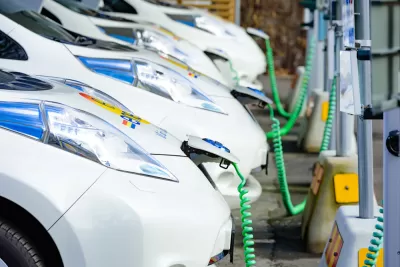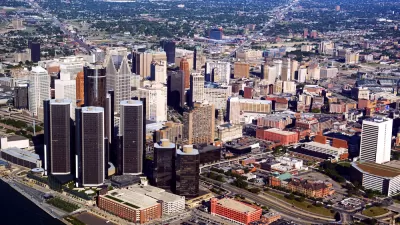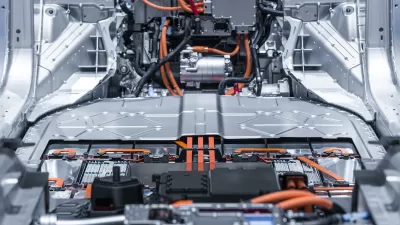An innovative electric car program in a small Central Valley town provides much-needed rides to low-income migrant workers.

The mayor of a small Central Valley town has transformed the overlooked community into the country's greenest migrant farmworker community through a revolutionary electric vehicle program, reports Evan Halper for The Los Angeles Times.
Located more than 50 miles from Fresno, Huron has struggled to provide adequate transportation for its population. Now, a program known as the Green Raiteros—a Spanglish term used to refer to migrant workers informally giving or receiving rides—makes transportation available free of charge to local residents using a fleet of nine electric cars, which the mayor hopes can grow. The program is funded through state grants and provides unlimited rides to residents, many of whom need transportation to nearby cities for medical appointments or other errands.
The town has also invested in charging infrastructure, with 30 stations already installed. As Halper writes, "It is a notable distinction when environmental justice groups are otherwise exasperated by the concentration of electric vehicle infrastructure in the wealthiest ZIP Codes." Mayor León hopes to make the city a model of electric vehicle innovation that, unlike most EV incentive programs, focuses on low-income households that can't afford car ownership.
The article goes on to describe Rancho San Pedro, another low-income community near the Port of Los Angeles experimenting with electric car share. The Huron and Rancho San Pedro programs highlight the impact that electric vehicles can have on low-income and rural communities, particularly those with low car ownership and lacking robust public transit networks.
FULL STORY: A neglected California city reinvents itself with electric cars — and plots a road map for the nation

Study: Maui’s Plan to Convert Vacation Rentals to Long-Term Housing Could Cause Nearly $1 Billion Economic Loss
The plan would reduce visitor accommodation by 25,% resulting in 1,900 jobs lost.

Placekeeping: Setting a New Precedent for City Planners
How a preservation-based approach to redevelopment and urban design can prevent displacement and honor legacy communities.

Using Old Oil and Gas Wells for Green Energy Storage
Penn State researchers have found that repurposing abandoned oil and gas wells for geothermal-assisted compressed-air energy storage can boost efficiency, reduce environmental risks, and support clean energy and job transitions.

Washington State Plans Ambitious ‘Cycle Highway’ Network
The state is directing funding to close gaps in its existing bike network and make long-distance trips more accessible.

Homeowners Blame PG&E for Delays in ADU Permits
The utility says it has dramatically reduced its backlog, but applicants say they still face months-long delays for approvals for new electrical work.

Rethinking Wildfire Defense: How a Landscape Approach Can Protect Neighborhoods
Post-fire analysis of the Eaton Fire reveals that a landscape approach — including fire-resistant vegetation, home hardening, and strategic planning — can help reduce wildfire risk, challenging assumptions that trees and plants are primary fire hazards.
Urban Design for Planners 1: Software Tools
This six-course series explores essential urban design concepts using open source software and equips planners with the tools they need to participate fully in the urban design process.
Planning for Universal Design
Learn the tools for implementing Universal Design in planning regulations.
Borough of Carlisle
Caltrans
Heyer Gruel & Associates PA
Institute for Housing and Urban Development Studies (IHS)
City of Grandview
Harvard GSD Executive Education
Salt Lake City
NYU Wagner Graduate School of Public Service
City of Cambridge, Maryland





























